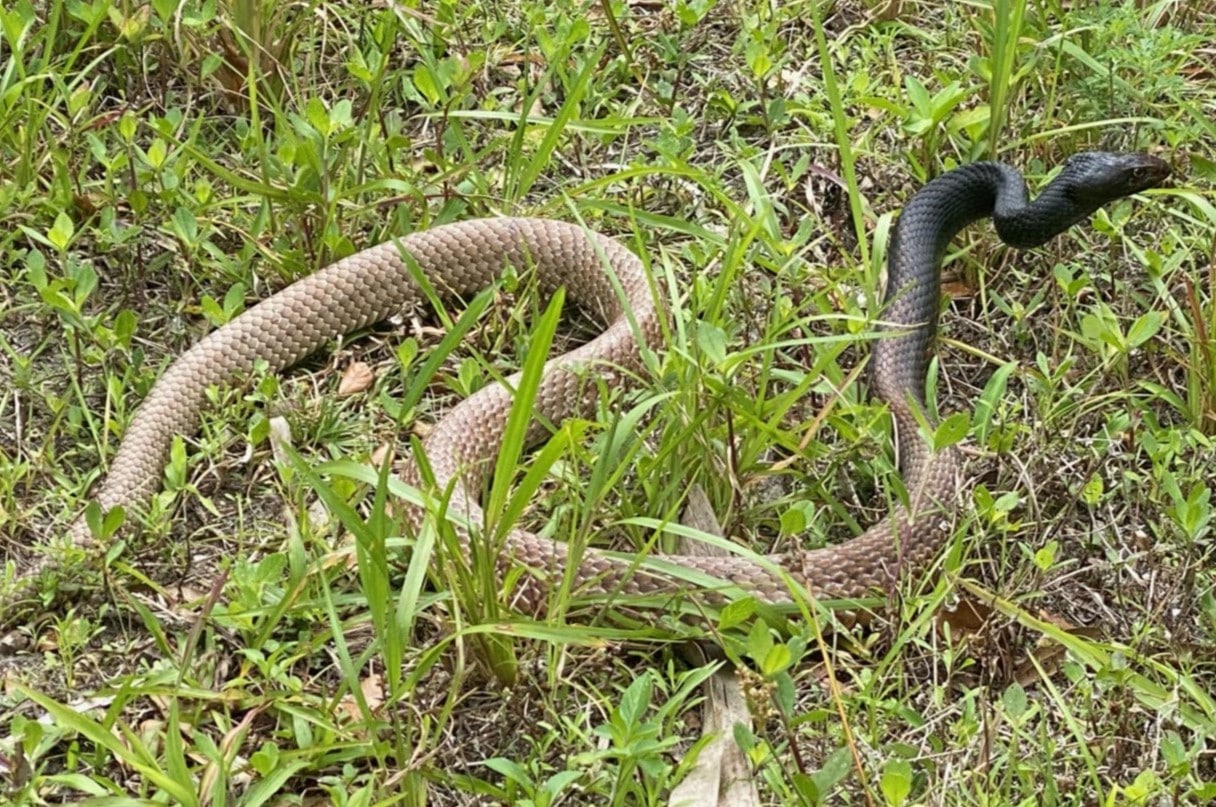
The Coachwhip, scientifically known as Masticophis flagellum, is a fascinating snake species that captures the imagination of both scientists and reptile enthusiasts alike. With its slender body and lightning-fast speed, this non-venomous reptile is a master of survival. Found primarily in the United States and Mexico, the Coachwhip is known for its impressive hunting techniques and unique physical characteristics.
In this article, we will delve into the world of Coachwhips and explore some astounding facts about these remarkable creatures. From their impressive size to their remarkable ability to mimic venomous snakes, the Coachwhip has plenty of surprises in store. So, let’s dive in and uncover some of the most intriguing aspects of this amazing species.
Key Takeaways:
- Coachwhips are non-venomous, impressive climbers, and exceptional hunters with remarkable speed. They play a vital role in controlling rodent populations, maintaining a balanced ecosystem.
- Coachwhips have unique defense mechanisms, impressive camouflage, and social behavior. They are important nocturnal hunters with a long lifespan, contributing to the diversity of their habitat.
The Coachwhip is a Non-venomous Snake
One of the most fascinating things about the Coachwhip is that it is a non-venomous snake. Despite its intimidating appearance and quick movements, this species poses no threat to humans.
Found in North America
The Coachwhip is primarily found in North America, stretching from the southern United States to parts of Mexico. It is commonly spotted in grasslands, deserts, and scrub habitats.
Impressive Length
The Coachwhip is known for its impressive length. On average, it can grow up to six to eight feet long, making it one of the longest non-venomous snakes in North America.
Excellent Climbers
Coachwhips are exceptional climbers and are often seen scaling trees and shrubs with great agility. This ability helps them hunt for prey and escape potential predators.
Remarkable Speed
The Coachwhip is known for its incredible speed. It can slither across the ground at a rapid pace, reaching speeds of up to 15 miles per hour. This agility allows it to swiftly capture prey and evade danger.
Varied Diet
Coachwhips have a diverse diet and are opportunistic hunters. They feed on small mammals, lizards, birds, and even other snakes. Their ability to consume a wide range of prey contributes to their survival and adaptability.
Exceptional Eyesight
The Coachwhip has excellent eyesight, which aids in its hunting endeavors. It can detect movement from a considerable distance and accurately strike at its prey.
Unique Defense Mechanism
When threatened, the Coachwhip displays a unique defense mechanism. It will rapidly vibrate its tail, creating a buzzing sound similar to that of a rattlesnake. This behavior often deters potential predators.
Strong and Agile
The Coachwhip is known for its strength and agility. It can coil tightly around its prey, squeezing and constricting until it becomes immobilized.
Impressive Camouflage
Coachwhips have remarkable camouflage that allows them to blend into their surroundings. Their scales have a pattern resembling dried grass or earth tones, providing effective camouflage in their habitat.
Social Behavior
Unlike many other snake species, Coachwhips are known for their social behavior. They are often seen in groups during the mating season and may engage in courtship rituals.
Nocturnal Hunters
Coachwhips are primarily nocturnal hunters, meaning they are most active during the night. Their excellent night vision helps them locate and capture prey in the darkness.
Long Lifespan
The Coachwhip has a relatively long lifespan compared to other snake species. They can live for up to 12 years in the wild, provided they have access to suitable habitats and sufficient food sources.
Unique Locomotion
The Coachwhip has a distinctive way of moving called “sidewinding.” This method of locomotion involves pushing its body forward in a series of sideways loops, allowing it to move efficiently across sandy or loose surfaces.
Temperature Regulation
Coachwhips are ectothermic animals, meaning they rely on external sources of heat to regulate their body temperature. They often bask in the sun to warm themselves and become more active.
Important in Ecosystem
The Coachwhip plays a vital role in its ecosystem as a predator, controlling populations of rodents and other smaller animals. By doing so, it helps maintain a balanced ecosystem.
These 16 astounding facts about Coachwhip highlight the impressive adaptability and unique characteristics of this fascinating snake species. From its non-venomous status and remarkable speed to its social behavior and important ecological role, the Coachwhip continues to captivate snake enthusiasts and researchers alike. So, keep your eyes peeled for this impressive creature on your next outdoor adventure!
Conclusion
In conclusion, the coachwhip is a truly fascinating and remarkable creature. From its impressive speed and agility to its unique hunting techniques, this snake continues to captivate and astound both researchers and nature enthusiasts alike. The coachwhip’s ability to adapt to a variety of habitats and its important role in controlling rodent populations make it a valuable asset to ecosystems. With its striking appearance and intriguing behaviors, the coachwhip certainly deserves its place among the remarkable animals of the world.
FAQs
1. Are coachwhips venomous?
No, coachwhips are not venomous. Although they can bite if threatened, their bite is harmless to humans.
2. How fast can a coachwhip snake move?
Coachwhips are incredibly fast snakes and are known for their ability to move swiftly. They have been recorded to reach speeds of up to 15 miles per hour!
3. What do coachwhips eat?
Coachwhips primarily feed on small mammals, such as rodents, birds, lizards, and even other snakes. They are skilled hunters and can capture and devour their prey with ease.
4. Where can coachwhips be found?
Coachwhips can be found in various habitats across North and Central America. They prefer open grasslands, deserts, and scrublands, but can also be found in forests and marshy areas.
5. How long do coachwhips grow?
Coachwhips can grow to an impressive length of 6 to 9 feet. They are slender and have a whip-like appearance, which is how they earned their name.
6. Are coachwhips aggressive?
Coachwhips are generally shy and non-aggressive snakes. They are known for their speedy escape behavior and prefer to avoid confrontation with humans or other animals.
7. Do coachwhips make good pets?
While coachwhips may seem fascinating as pets, they are not recommended for inexperienced snake owners. They have specific care requirements and need a large, secure enclosure to thrive.
8. How do coachwhips defend themselves?
When confronted or threatened, coachwhips rely on their speed and agility to escape from potential predators. They also have the ability to mimic the behavior of venomous snakes, such as flattening their heads and vibrating their tails.
Coachwhips aren't just fascinating snakes; they're part of a larger world of incredible creatures. Delving into the realm of serpents, you'll find a treasure trove of snake facts that will leave you astounded. Nature lovers won't want to miss out on exploring wildlife in all its diverse glory. For those with a particular interest in scaly critters, prepare to be amazed by the reptiles that share our planet.
Was this page helpful?
Our commitment to delivering trustworthy and engaging content is at the heart of what we do. Each fact on our site is contributed by real users like you, bringing a wealth of diverse insights and information. To ensure the highest standards of accuracy and reliability, our dedicated editors meticulously review each submission. This process guarantees that the facts we share are not only fascinating but also credible. Trust in our commitment to quality and authenticity as you explore and learn with us.


